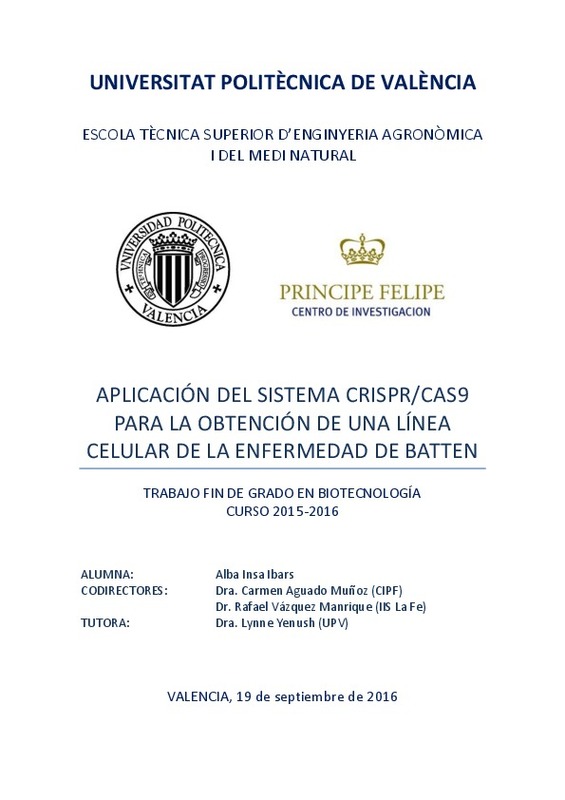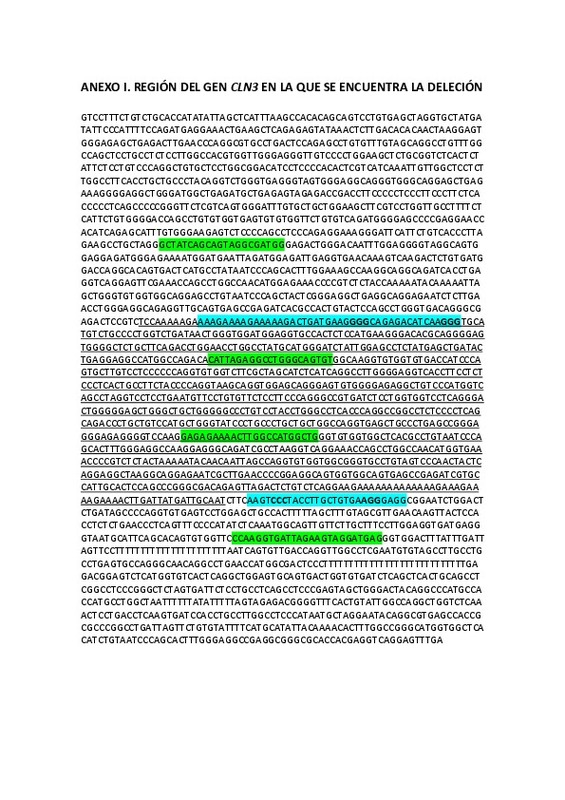JavaScript is disabled for your browser. Some features of this site may not work without it.
Buscar en RiuNet
Listar
Mi cuenta
Estadísticas
Ayuda RiuNet
Admin. UPV
Aplicación del sistema CRISPR/CAS9 para la obtención de una línea celular de la Enfermedad de Batten
Mostrar el registro completo del ítem
Insa Ibars, A. (2016). Aplicación del sistema CRISPR/CAS9 para la obtención de una línea celular de la Enfermedad de Batten. http://hdl.handle.net/10251/72284.
Por favor, use este identificador para citar o enlazar este ítem: http://hdl.handle.net/10251/72284
Ficheros en el ítem
Metadatos del ítem
| Título: | Aplicación del sistema CRISPR/CAS9 para la obtención de una línea celular de la Enfermedad de Batten | |||
| Autor: | Insa Ibars, Alba | |||
| Director(es): | Aguado Muñoz, Carmen Vázquez Manrique, Rafael | |||
| Entidad UPV: |
|
|||
| Fecha acto/lectura: |
|
|||
| Resumen: |
[ES] Las lipofuscinosis ceroideas neuronales (NCL) son un grupo de trastornos metabólicos neurodegenerativos. Hasta el momento se han descrito 14 variantes diferentes de NCL con características patológicas similares aunque ...[+]
[EN] Neuronal ceroid lipofuscinosis (NCL) are a group of neurodegenerative metabolic disorders. Until now, have been described 14 different variants of NCL with similar pathological features caused by mutations in different ...[+]
|
|||
| Palabras clave: |
|
|||
| Derechos de uso: | Reserva de todos los derechos | |||
| Editorial: |
|
|||
| Titulación: |
|
|||
| Tipo: |
|
recommendations
Este ítem aparece en la(s) siguiente(s) colección(ones)
-
ETSIAMN - Trabajos académicos [3541]
Escuela Técnica Superior de Ingeniería Agronómica y del Medio Natural








